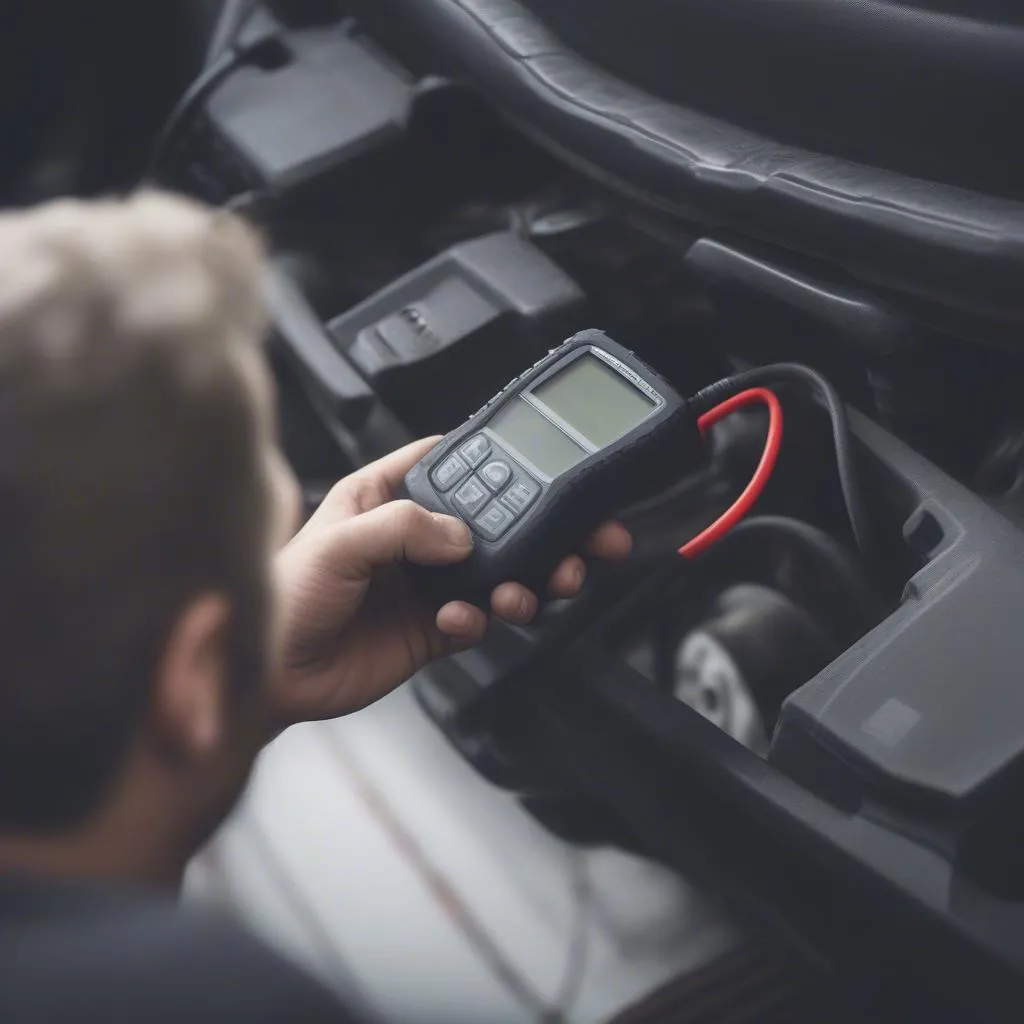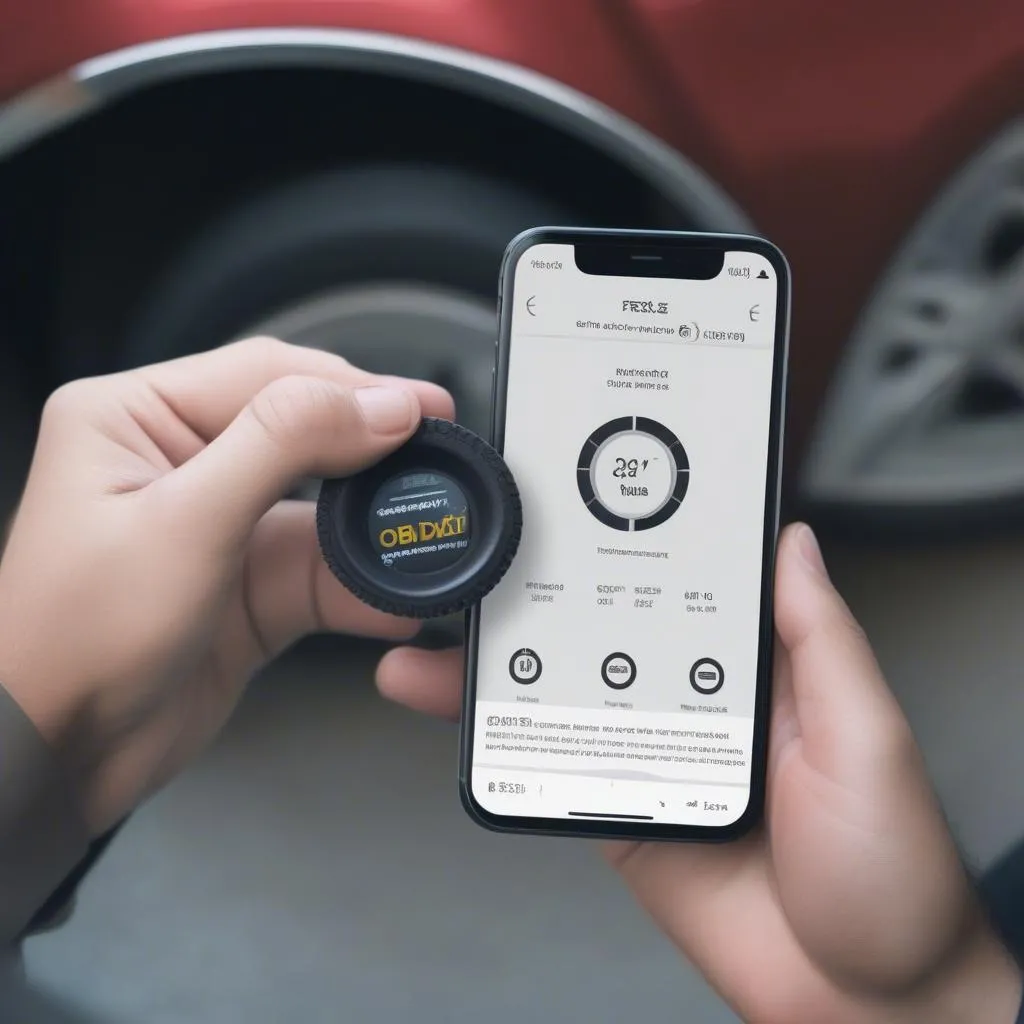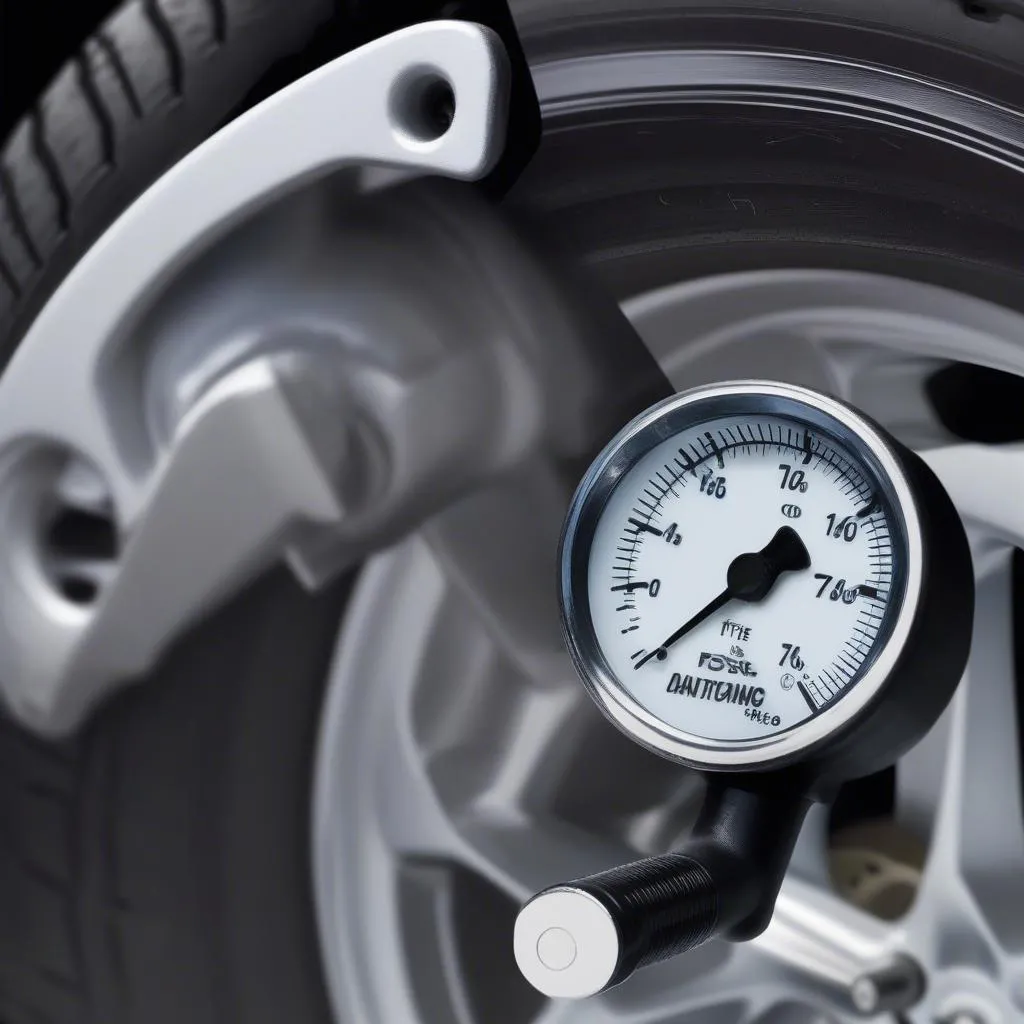Have you ever been driving down the road and felt a strange vibration in your car? Maybe you’ve even noticed a tire that looks a little flat. But you don’t have a tire pressure gauge handy, and you’re not sure how to check your tire pressure. What can you do?
Well, if your car is equipped with a Tire Pressure Monitoring System (TPMS), there’s a good chance you can see your tire pressure using your OBD-II port!
What is OBD-II and How Does it Relate to Tire Pressure?
OBD-II, short for On-Board Diagnostics, is a standardized system for monitoring and diagnosing vehicle emissions and other systems. It’s basically a way for your car to talk to you, but instead of using words, it uses codes. These codes can tell you if there’s a problem with your engine, transmission, brakes, and even your TPMS!
When your car is equipped with TPMS, it can send information about your tire pressure to your OBD-II port. This information can be accessed using a specialized diagnostic tool, such as a code reader or a smartphone app.
How To See Tire Pressure With Obd
There are two main ways to access tire pressure data through your OBD-II port:
1. Using a Diagnostic Tool
You can use a diagnostic tool to read the data from your OBD-II port. These tools are available from many retailers, such as Amazon or Walmart. You’ll need a tool that can read the TPMS data. Some popular options include:
- Dealer scanners: These are more expensive but are also the most versatile. Dealer scanners can read a wider range of codes and data, and they are often used by mechanics to diagnose car problems.
- Generic OBD-II Scanners: These are less expensive and can read basic codes, but they may not be able to access all of the TPMS data.
Once you have a diagnostic tool, you can connect it to your car’s OBD-II port, which is typically located under the dashboard. Follow the instructions that came with your tool to access the tire pressure data.
2. Using a Smartphone App
There are several apps available for Android and iOS devices that can connect to your car’s OBD-II port. These apps can read the TPMS data, along with other information, such as engine codes and fuel economy.
Some popular OBD-II apps include:
- Torque Pro: This app is a favorite among mechanics and car enthusiasts. It offers a wide range of features, including TPMS reading, real-time data monitoring, and custom dashboards.
- OBD Fusion: This app is another popular choice that offers a wide range of features, including TPMS reading, engine code scanning, and performance monitoring.
To use a smartphone app to access your tire pressure data, you’ll need to purchase an OBD-II adapter that connects to your car’s port and plugs into your smartphone. Once the adapter is connected, follow the instructions in the app to access the TPMS data.
Frequently Asked Questions
Q: Does every car have TPMS?
A: No, not every car has TPMS. It is typically found in newer cars, but older cars may not be equipped with TPMS.
Q: How accurate is TPMS data?
A: TPMS data is generally quite accurate. However, it’s important to note that the data may vary slightly depending on the temperature and the age of the tires.
Q: Can I inflate my tires to the pressure shown on my OBD-II reader?
A: Yes, you can inflate your tires to the pressure shown on your OBD-II reader. However, it’s always a good idea to check your tire pressure with a manual tire pressure gauge, especially if you’re concerned about the accuracy of your TPMS system.
Q: What if my tire pressure is low?
A: If your tire pressure is low, it’s important to inflate it to the correct pressure. Low tire pressure can lead to a number of problems, including:
- Reduced fuel economy: Low tire pressure can increase rolling resistance, which can reduce your fuel economy.
- Uneven tire wear: Low tire pressure can cause the center of the tire to wear out faster than the edges.
- Increased risk of a blowout: Low tire pressure can increase the risk of a tire blowout, especially at high speeds.
Q: What if my tire pressure is high?
A: If your tire pressure is high, it’s important to deflate it to the correct pressure. High tire pressure can also lead to a number of problems, including:
- Reduced ride comfort: High tire pressure can make your car feel bumpy and uncomfortable.
- Increased risk of a blowout: High tire pressure can cause the tire to become overheated, which can increase the risk of a blowout.
Conclusion
Checking your tire pressure with your OBD-II port is a convenient and easy way to ensure that your tires are properly inflated. This can help you improve your fuel economy, extend the life of your tires, and prevent potential problems down the road.
If you have any questions about your car’s TPMS system or how to use your OBD-II port, please don’t hesitate to contact us!
 OBD Tire Pressure Tool
OBD Tire Pressure Tool
 OBD Tire Pressure App
OBD Tire Pressure App
 Tire Pressure Gauge
Tire Pressure Gauge